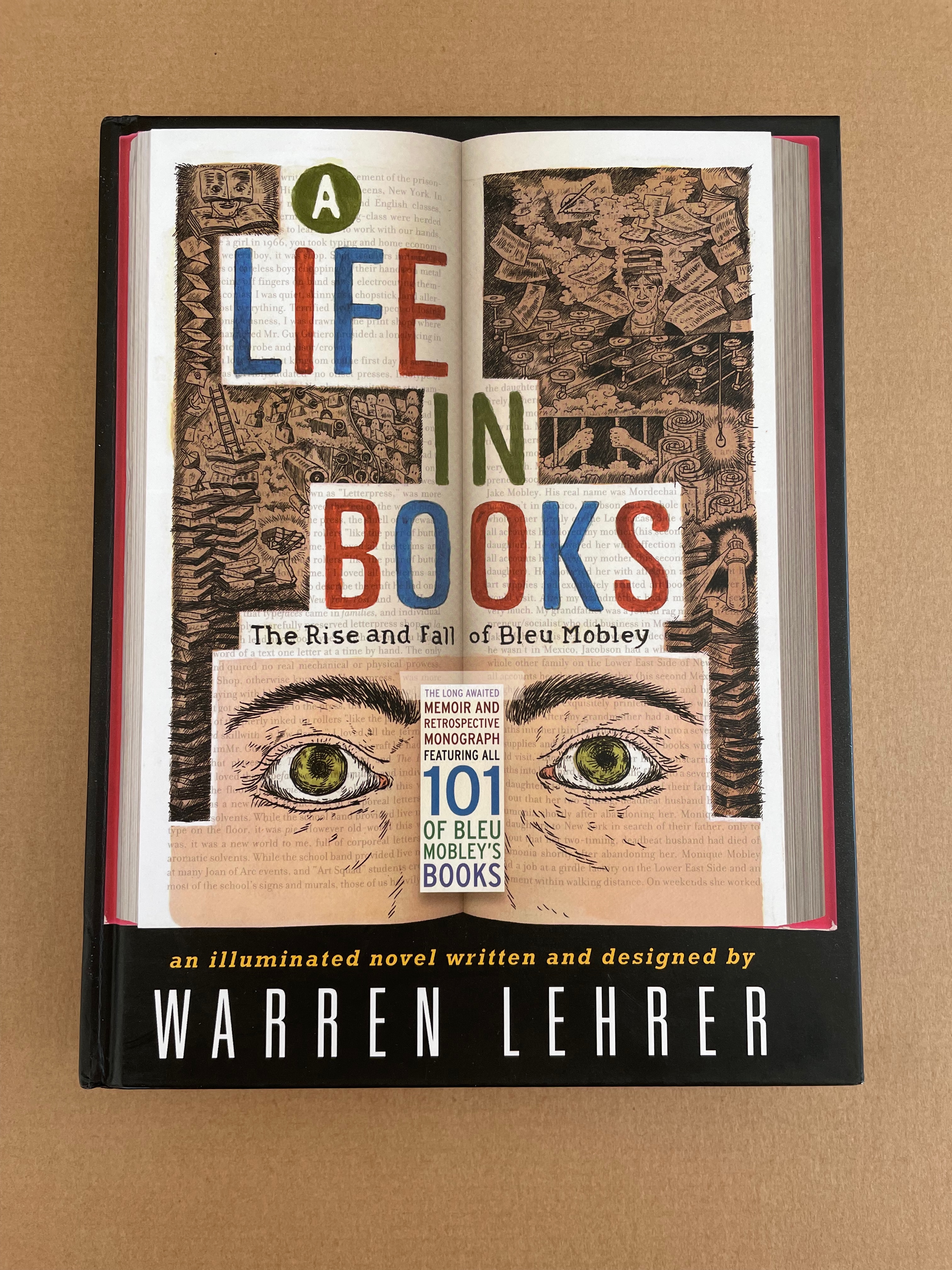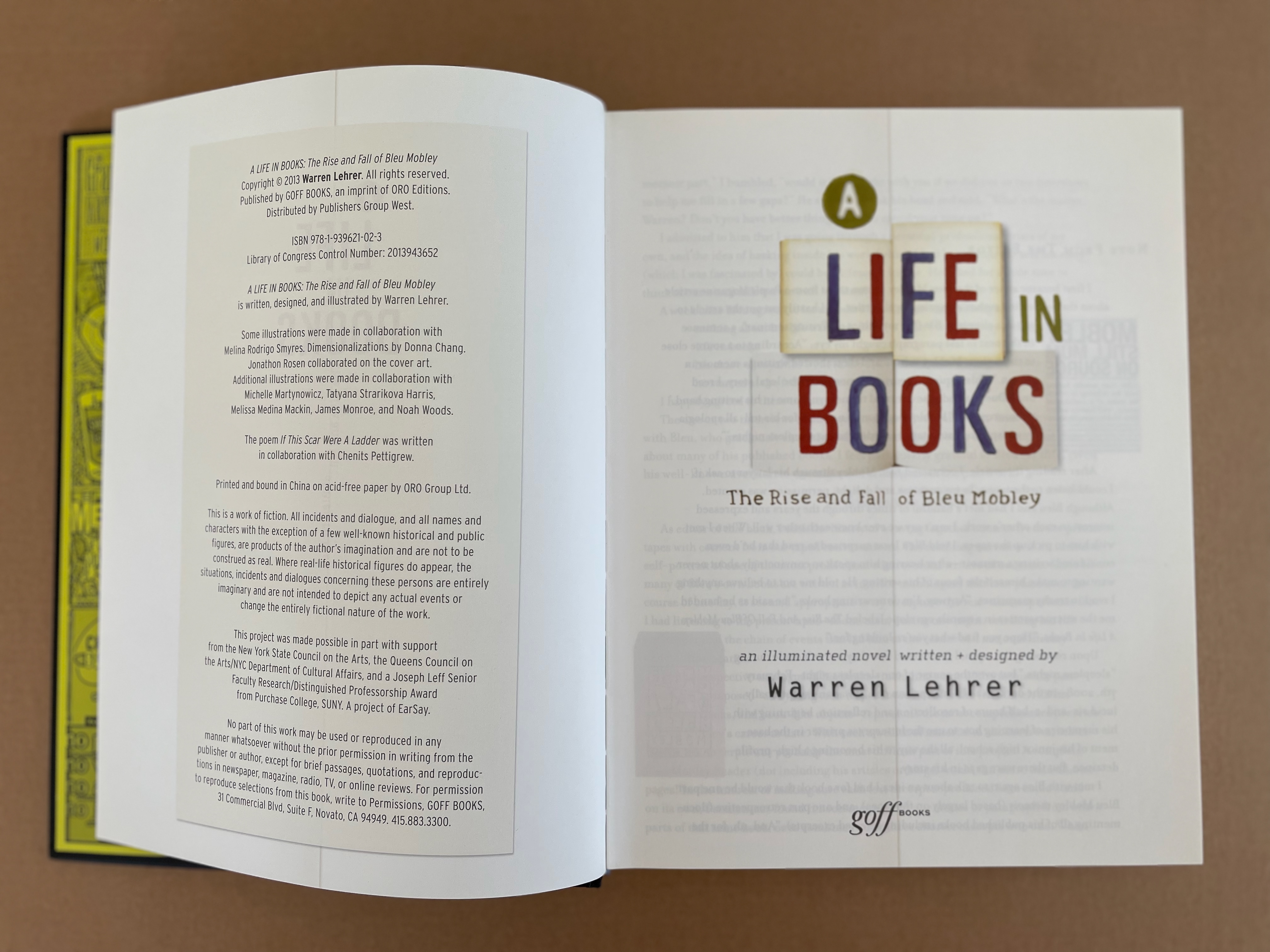A Life in Books: The Rise and Fall of Bleu Mobley (2013)



A Life in Books: The Rise and Fall of Bleu Mobley. An Illuminated Novel Written & Designed by Warren Lehrer (2013)
Warren Lehrer
Casebound, illustrated paper over boards with illustrated doublures. H254 x W198 x D28 mm. 300 pages. Acquired from Amazon, 3 March 2015.
Photos: Books On Books Collection.